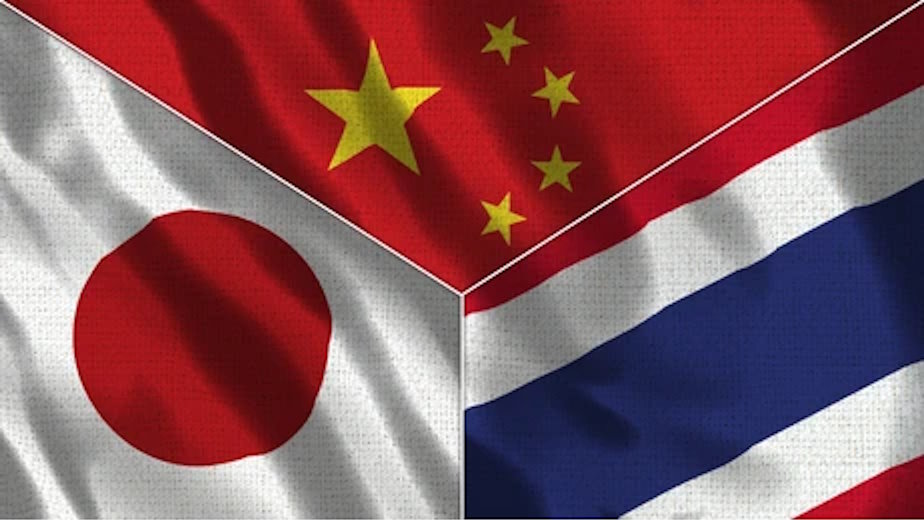《声なき祈り / Silent Prayer》|當聲帶化作火焰,祈禱在失真中重生 ver.2
AiNA THE END,日本女性創作歌手、前 BiSH 靈魂主唱之一。
她以 爆裂的哭腔 × 纖細的耳語 × 原始身體性 聲線著稱,能在一首歌裡完成從呢喃到撕裂的瞬間變形。
個人作品將 post-jrock、avant-jpop、cinematic rock 糅成一種「聖潔的髒」:
旋律像傷口,節拍像心跳,舞台像告解室。
在這首作品裡,她把信仰與痛苦化為同義詞—
聲音不是語言,而是活著的證明。
主題/靈感:當寂寞登入,靈魂開始上線
靈感取自導演 黑澤清 的電影 《Kairo / 脈衝》。
片中「網路=孤獨的擴音器」的命題,被轉寫為 AiNA 的聲音神學:
在失聯的城市裡,祈禱不是被聽見,而是被上傳。
歌詞裡「Inhale the lie」不是投降,而是求生術;
她在燃燒的天空下吞下謊言,再用破碎的聲帶吐出救贖。
「壊れた声が神になる」—當聲帶破裂,神性才開始響起。
聲音設計與取樣構成
本曲以 post-jrock × avant-jpop × cinematic rock 為骨架,三首 AiNA 作品的DNA被重組為儀式性結構:
• Main Riff / Hook(取樣〈革命道中〉):
粗砺的主結他與爆發段嘶吼,成為整曲的「戰鬥祈禱」。
• Chord Spine(取樣〈誰かの心臓になれたなら〉):
弦樂+鋼琴進行構築「泣きメロ」軸心,副歌推進像胸腔被拉開。
• Atmos / Bridge(取樣〈THE END〉):
低頻鼓組層與呼吸式環境音,於 Bridge 與尾聲製造「白化視界」。
• Vocal Architecture(強化 AiNA 唱腔版):
20% 耳語 × 50% 哭腔高推胸聲 × 15% 吶喊 × 15% 易碎氣音;
C3–E5 區間以滑音與哭腔顫音連接——像撕裂也像擁抱。
• Mix Gesture:
前段以三連鼓組+低頻牆堆疊張力,
最終副歌進入全弦牆+多八度疊唱,留下黑膠尾噪如祭典後的煙。
這不是模仿,而是一次對自身聲音史的拆解與再聖化:
把過去的 AiNA 逐一取樣,拼成一具會呼吸的新身體。
命題核心
「痛みも愛も すべて祈り」
痛與愛在這裡不是對立面,而是讓靈魂保持線上的兩種電壓。
《声なき祈り / Silent Prayer》讓「吸入謊言」成為存活儀式:
她在火中歌唱,在白噪裡復活。
壞掉的聲音,正是我們尚且活著的證據。
#linchao
#AiNA
#visualkei
#AiNAtheEnd
#avantpop
#革命道中
#metal
#rock
#声なき祈り
#jvisualrock
#japanese
#japan
#jpop
#postrock
#黑澤清
#Kairo
#BiSH
《声なき祈り / Silent Prayer》|當聲帶化作火焰,祈禱在失真中重生 ver.2
AiNA THE END,日本女性創作歌手、前 BiSH 靈魂主唱之一。
她以 爆裂的哭腔 × 纖細的耳語 × 原始身體性 聲線著稱,能在一首歌裡完成從呢喃到撕裂的瞬間變形。
個人作品將 post-jrock、avant-jpop、cinematic rock 糅成一種「聖潔的髒」:
旋律像傷口,節拍像心跳,舞台像告解室。
在這首作品裡,她把信仰與痛苦化為同義詞—
聲音不是語言,而是活著的證明。
主題/靈感:當寂寞登入,靈魂開始上線
靈感取自導演 黑澤清 的電影 《Kairo / 脈衝》。
片中「網路=孤獨的擴音器」的命題,被轉寫為 AiNA 的聲音神學:
在失聯的城市裡,祈禱不是被聽見,而是被上傳。
歌詞裡「Inhale the lie」不是投降,而是求生術;
她在燃燒的天空下吞下謊言,再用破碎的聲帶吐出救贖。
「壊れた声が神になる」—當聲帶破裂,神性才開始響起。
聲音設計與取樣構成
本曲以 post-jrock × avant-jpop × cinematic rock 為骨架,三首 AiNA 作品的DNA被重組為儀式性結構:
• Main Riff / Hook(取樣〈革命道中〉):
粗砺的主結他與爆發段嘶吼,成為整曲的「戰鬥祈禱」。
• Chord Spine(取樣〈誰かの心臓になれたなら〉):
弦樂+鋼琴進行構築「泣きメロ」軸心,副歌推進像胸腔被拉開。
• Atmos / Bridge(取樣〈THE END〉):
低頻鼓組層與呼吸式環境音,於 Bridge 與尾聲製造「白化視界」。
• Vocal Architecture(強化 AiNA 唱腔版):
20% 耳語 × 50% 哭腔高推胸聲 × 15% 吶喊 × 15% 易碎氣音;
C3–E5 區間以滑音與哭腔顫音連接——像撕裂也像擁抱。
• Mix Gesture:
前段以三連鼓組+低頻牆堆疊張力,
最終副歌進入全弦牆+多八度疊唱,留下黑膠尾噪如祭典後的煙。
這不是模仿,而是一次對自身聲音史的拆解與再聖化:
把過去的 AiNA 逐一取樣,拼成一具會呼吸的新身體。
命題核心
「痛みも愛も すべて祈り」
痛與愛在這裡不是對立面,而是讓靈魂保持線上的兩種電壓。
《声なき祈り / Silent Prayer》讓「吸入謊言」成為存活儀式:
她在火中歌唱,在白噪裡復活。
壞掉的聲音,正是我們尚且活著的證據。
#linchao
#AiNA
#visualkei
#AiNAtheEnd
#avantpop
#革命道中
#metal
#rock
#声なき祈り
#jvisualrock
#japanese
#japan
#jpop
#postrock
#黑澤清
#Kairo
#BiSH
AiNA THE END,日本女性創作歌手、前 BiSH 靈魂主唱之一。
她以 爆裂的哭腔 × 纖細的耳語 × 原始身體性 聲線著稱,能在一首歌裡完成從呢喃到撕裂的瞬間變形。
個人作品將 post-jrock、avant-jpop、cinematic rock 糅成一種「聖潔的髒」:
旋律像傷口,節拍像心跳,舞台像告解室。
在這首作品裡,她把信仰與痛苦化為同義詞—
聲音不是語言,而是活著的證明。
主題/靈感:當寂寞登入,靈魂開始上線
靈感取自導演 黑澤清 的電影 《Kairo / 脈衝》。
片中「網路=孤獨的擴音器」的命題,被轉寫為 AiNA 的聲音神學:
在失聯的城市裡,祈禱不是被聽見,而是被上傳。
歌詞裡「Inhale the lie」不是投降,而是求生術;
她在燃燒的天空下吞下謊言,再用破碎的聲帶吐出救贖。
「壊れた声が神になる」—當聲帶破裂,神性才開始響起。
聲音設計與取樣構成
本曲以 post-jrock × avant-jpop × cinematic rock 為骨架,三首 AiNA 作品的DNA被重組為儀式性結構:
• Main Riff / Hook(取樣〈革命道中〉):
粗砺的主結他與爆發段嘶吼,成為整曲的「戰鬥祈禱」。
• Chord Spine(取樣〈誰かの心臓になれたなら〉):
弦樂+鋼琴進行構築「泣きメロ」軸心,副歌推進像胸腔被拉開。
• Atmos / Bridge(取樣〈THE END〉):
低頻鼓組層與呼吸式環境音,於 Bridge 與尾聲製造「白化視界」。
• Vocal Architecture(強化 AiNA 唱腔版):
20% 耳語 × 50% 哭腔高推胸聲 × 15% 吶喊 × 15% 易碎氣音;
C3–E5 區間以滑音與哭腔顫音連接——像撕裂也像擁抱。
• Mix Gesture:
前段以三連鼓組+低頻牆堆疊張力,
最終副歌進入全弦牆+多八度疊唱,留下黑膠尾噪如祭典後的煙。
這不是模仿,而是一次對自身聲音史的拆解與再聖化:
把過去的 AiNA 逐一取樣,拼成一具會呼吸的新身體。
命題核心
「痛みも愛も すべて祈り」
痛與愛在這裡不是對立面,而是讓靈魂保持線上的兩種電壓。
《声なき祈り / Silent Prayer》讓「吸入謊言」成為存活儀式:
她在火中歌唱,在白噪裡復活。
壞掉的聲音,正是我們尚且活著的證據。
#linchao
#AiNA
#visualkei
#AiNAtheEnd
#avantpop
#革命道中
#metal
#rock
#声なき祈り
#jvisualrock
#japanese
#japan
#jpop
#postrock
#黑澤清
#Kairo
#BiSH
《声なき祈り / Silent Prayer》|當聲帶化作火焰,祈禱在失真中重生 ver.2
AiNA THE END,日本女性創作歌手、前 BiSH 靈魂主唱之一。
她以 爆裂的哭腔 × 纖細的耳語 × 原始身體性 聲線著稱,能在一首歌裡完成從呢喃到撕裂的瞬間變形。
個人作品將 post-jrock、avant-jpop、cinematic rock 糅成一種「聖潔的髒」:
旋律像傷口,節拍像心跳,舞台像告解室。
在這首作品裡,她把信仰與痛苦化為同義詞—
聲音不是語言,而是活著的證明。
主題/靈感:當寂寞登入,靈魂開始上線
靈感取自導演 黑澤清 的電影 《Kairo / 脈衝》。
片中「網路=孤獨的擴音器」的命題,被轉寫為 AiNA 的聲音神學:
在失聯的城市裡,祈禱不是被聽見,而是被上傳。
歌詞裡「Inhale the lie」不是投降,而是求生術;
她在燃燒的天空下吞下謊言,再用破碎的聲帶吐出救贖。
「壊れた声が神になる」—當聲帶破裂,神性才開始響起。
聲音設計與取樣構成
本曲以 post-jrock × avant-jpop × cinematic rock 為骨架,三首 AiNA 作品的DNA被重組為儀式性結構:
• Main Riff / Hook(取樣〈革命道中〉):
粗砺的主結他與爆發段嘶吼,成為整曲的「戰鬥祈禱」。
• Chord Spine(取樣〈誰かの心臓になれたなら〉):
弦樂+鋼琴進行構築「泣きメロ」軸心,副歌推進像胸腔被拉開。
• Atmos / Bridge(取樣〈THE END〉):
低頻鼓組層與呼吸式環境音,於 Bridge 與尾聲製造「白化視界」。
• Vocal Architecture(強化 AiNA 唱腔版):
20% 耳語 × 50% 哭腔高推胸聲 × 15% 吶喊 × 15% 易碎氣音;
C3–E5 區間以滑音與哭腔顫音連接——像撕裂也像擁抱。
• Mix Gesture:
前段以三連鼓組+低頻牆堆疊張力,
最終副歌進入全弦牆+多八度疊唱,留下黑膠尾噪如祭典後的煙。
這不是模仿,而是一次對自身聲音史的拆解與再聖化:
把過去的 AiNA 逐一取樣,拼成一具會呼吸的新身體。
命題核心
「痛みも愛も すべて祈り」
痛與愛在這裡不是對立面,而是讓靈魂保持線上的兩種電壓。
《声なき祈り / Silent Prayer》讓「吸入謊言」成為存活儀式:
她在火中歌唱,在白噪裡復活。
壞掉的聲音,正是我們尚且活著的證據。
#linchao
#AiNA
#visualkei
#AiNAtheEnd
#avantpop
#革命道中
#metal
#rock
#声なき祈り
#jvisualrock
#japanese
#japan
#jpop
#postrock
#黑澤清
#Kairo
#BiSH
0 留言
·0 分享
·2K 瀏覽次數
·15 Plays
·0 評論

